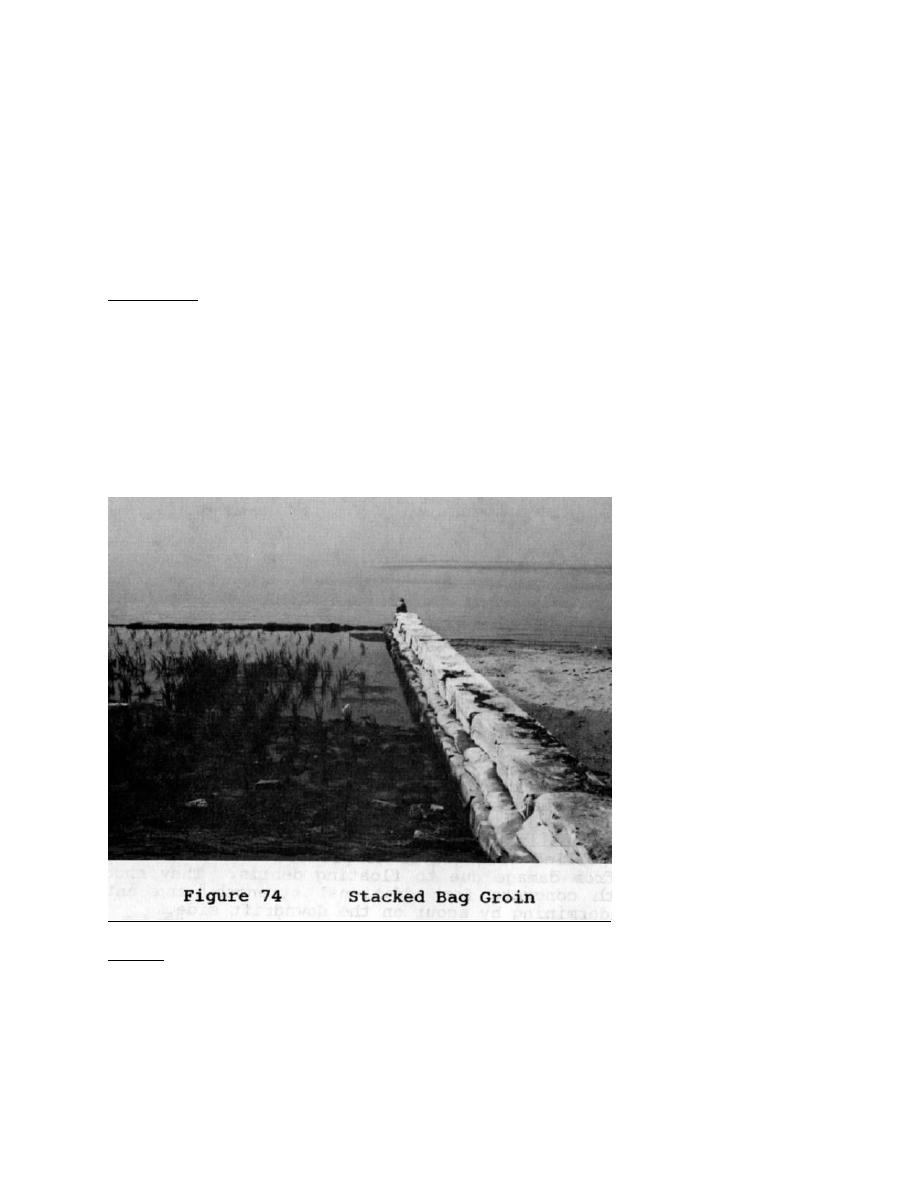
bypassing sand too far offshore and cause downdrift erosion damages.
The groin spacing should
generally be two or three times the groin length.
Groins can be built as sheet pile structures that depend on ground penetration for support, or as
gravity structures that resist movement solely because of their weight. In-either case, it is essential to
prevent or adequately plan for bottom scour. For sheet pile structures, scour reduces their amount of
embedment and makes them vulnerable to tipping. Rigid gravity structures can settle unevenly and be
damaged if undermined by scour.
Stacked Baqs
Wave Height Range: Below five feet.
A stacked bag groin is similar to a stacked bag breakwater (Figure 74). The bags can either be
sand or grout-filled. As with breakwaters, larger bags are recommended because lighter, smaller bags are
too susceptible to displacement. The recommendations for bag breakwaters also apply to groins. The
bags in the photo were filled between wooden forms to achieve their blocky shape, but this was
unnecessary. When installed properly, stacked bag groins have performed well; however, they should
only be considered a short-term solution when filled with sand.
Gabions
Wave Height Range: Above five feet.
The recommendations for gabion revetments generally apply. The groin should be underlain with
filter cloth to inhibit settlement, and all baskets should be made from PVC-coated wire mesh. Tiers of
108



 Previous Page
Previous Page
